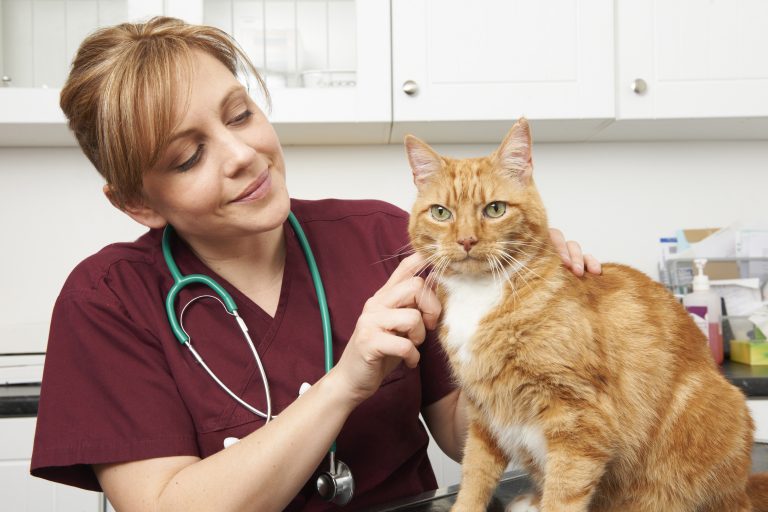 December is a busy time. You’d be forgiven for putting off decisions about generating customer loyalty and marketing plans until the new year. So I promise you – no decision making is required today!
December is a busy time. You’d be forgiven for putting off decisions about generating customer loyalty and marketing plans until the new year. So I promise you – no decision making is required today!
However if you can grab a cup of coffee and take 5 minutes to read this article, you’ll be in a much stronger position to hit the ground running in 2020.
In this article I have outlined a framework that you and your team can build on together when you return refreshed and refocused in the new year. Whether you adopt all or one, these 7 strategies are easy to implement and will have a substantial and immediate impact on your client satisfaction and loyalty in 2020.
1. First Impressions Count
Walk outside and imagine you are a new client visiting your clinic for the first time. What do you see?
🗹 Signage – Is your signage in good condition and clearly legible from the street? Is your practice easy to find?
🗹 External cleanliness – is there rubbish blowing around outside, are there cobwebs in the eaves? Is the garden tidy and weed-free?
🗹 Is there adequate parking? (Ensure staff are parking away from the entrance)
🗹 Reception area and consult rooms – remove any tatty or out of date flyers, magazines and posters, restock empty brochure holders, repair or replace broken equipment such as seating and flooring. Ensure stock is displayed neatly and rotated regularly according to expiry dates.
Most of these issues would appear to be obvious, however it is very easy to stop noticing when we are looking at the same scene every day.
2. Personalisation
Every client wants to feel as if they and their pets are members of your family. Ensure that your team members are consciously using these methods to interact and make everyone feel special.
🗹 Active listening – maintaining eye contact, nodding, repeating back, not interrupting or appearing to be too busy to spend time with a client.
🗹 Using client and patient names. This small but important step is the most impactful and under-used communication tool in veterinary clinics. On average, only 1 in every 10 mystery shopping phone calls I have made to veterinary clinics used my name or asked for my pet’s name. What a missed opportunity to make your clients feel welcome!
🗹 Referencing previous visits. Your nurse may just be taking a vaccination booking, but asking how Fluffy’s ears have been since his last visit shows your client that she’s looking at the patient history and is interested in their pet’s progress.
🗹 Patient birthdays. Sending an email with age related health advice or a free gift can make your client’s day.
🗹 Name badges and uniforms. Ensure that team members are wearing name badges at all times. This not only helps your clients to build positive and more personal relationships with your team members, it encourages accountability in regards to client feedback. A uniform policy will ensure consistency in presentation.
🗹 Preferred vet. It is not always possible for the same vet to be available to a particular patient however most clients will appreciate an acknowledgement of their preference without having to ask every time. A helpful note on the client record is all that is needed.
3. Know what they need before they know they need it
There is a lot we take for granted because we deal with pet care issues on a daily basis. But many clients feel too embarrassed to ask, or perhaps they haven’t considered it at all. You can save them a lot of stress and worry by proactively offering to help.
🗹 Check services due/coming up in ALL client interactions including nail clips, baths etc.
Don’t let your clients come in for a nail clip only to realise when they get home that their pet is overdue for vaccination. You’d be surprised how often this happens!
🗹 Moving interstate or out of town – if a client calls to request a patient history, offer to email the client their pets’ microchip numbers so that they can update their pet’s address details with the appropriate registry (refer clients to petaddress.com.au)
🗹 In clinic – offer products which complement each other. e.g. client purchases a worming tablet. Enquire if the patient is up to date with flea and heartworm prevention.
🗹 Be observant. Offer to open the door or to carry a large bag of dog food to the car if the client has their hands full or is physically frail.
4. Follow up and Follow Through
Veterinary teams don’t deliberately neglect to follow up on their patients’ progress, but the reality is that some non-urgent courtesy phone calls and emails will slip through the cracks when resources are limited and other patient needs become more pressing.
🗹 After-care. Most clinics will set work lists within their practice management systems to manage follow ups such as lab results, courtesy calls, sympathy cards and reminders which are tracked and recorded in the patient history. However it is just as important to know if these calls are being completed within a reasonable and agreed time-frame. If you tell the client that the vet will call them by the end of the week then the promised call needs to be made, even if it’s just to say that you don’t have an update yet. It sounds straight-forward but it is an issue that crops up frequently in client complaints. Make it a part of your weekly processes to review the status of client call backs and action them in a timely manner.
🗹 Dental treatment plans. Dental checks should be a routine part of every health check. But if the client walks out of the consult with a dental estimate and we don’t follow up, the chances of securing a booking are greatly reduced. A follow up call may result in objections about price or urgency, but this a good thing! If we don’t treat dental health as a priority, then how can we expect our clients to? By calling the client we have an opportunity to answer questions, to educate and to offer reassurance if required.
🗹 Email information. Email templates are a terrific time-saver for a busy practice. Concluding client discussions with an offer to send more information via email not only saves time for your busy team-members, it gives your client a value-add – something they didn’t ask for that will help them. This is also a great way to give clients a little space to consider options for routine procedures such as dentals and desexing. Decisions (often financial) need to be discussed with partners and family members. By sending helpful information with your practice contact information attached, you will significantly increase the likelihood of the client choosing your practice for their pet’s procedure. If you have good rapport with your client, you can even offer to follow up with them in a few days to answer any questions they may have.
5. Invite Feedback
Inviting feedback from clients allows us to improve our customer service, to clear up any misunderstandings and to let the client know that we are listening.
🗹 Check your processes and policies for seeking and managing client feedback. How often and at what communication points do you ask for feedback? i.e. in consults, at patient discharge from hospital, on courtesy calls, online etc. How are complaints escalated and within what time frame?
🗹 Do you use surveys or follow up calls to find out what your clients really think of your services or why they have not returned to your practice? Many dissatisfied customers will leave and never return. However many others are willing to comment if invited and some will also be open to coming back if you respond in a helpful way. Most importantly they will tell their friends and family.
🗹 In clinic – acknowledge body language and facial expressions directly.
“You seem to be concerned about something. Is there anything I can do to help?”
🗹 Mystery Shopping. This step is integrated with point 1 – First Impressions. Find out how well your client’s experience rates when they called your practice for the very first time. Did the team member use their name? Did they sound rushed? Did they offer to make a booking or to find out more information? Call some of your competitors and listen to their phone manner. How does it compare? Mystery shopping can be incredibly eye-opening!
6. Social Media
There is some debate about the value of social media to veterinary clinics – enough for me to dedicate another entire article to it!
In the meantime, having a Facebook page and an Instagram account doesn’t have to be a lot of work if you allocate the task to a media-savvy and enthusiastic team member. It is a low-cost and fun way to engage with your clients and to let them know what’s happening.
🗹 Blogs and newsletters – let your clients know about your services and standards of care. What makes you different?
🗹 Patient stories and photos. Everybody loves a story with a happy ending! Encourage your vets to write up their most interesting case studies and include x-rays and photos. (Don’t forget to get permission from the owners first.)
🗹 Behind the Scenes. People who don’t work in our fabulous industry LOVE to see what happens behind the scenes in a veterinary clinic! You don’t have to be a Bondi Vet, but you could publish a newsletter article about a Day in the Life of a Vet using a real-life team member, or host a clinic open day with support from industry partners.
If it’s not going to disrupt your workflow too much, invite your clients to accompany their pets into hospital at admission and help to settle them in. This is enormously reassuring for pet owners and it demonstrates transparency and pride in your practice.
🗹 Build a community. Share news about your support of charities and local council initiatives via social media and on your website.
7. Rewards and Fun Stuff
This sounds expensive and difficult to measure the return on – but it doesn’t have to be! It’s often the smallest gestures that go the furthest.
🗹 Advice is golden. Establish your veterinarians as the local ‘go-to’ experts (see Social Media above). Write blogs. Volunteer your services at local fund-raisers and dog events where they offer free health checks for pets. Invite your clients to online Q&A chats or send some helpful information by email to strengthen your client relationships and build loyalty.
🗹 Offer incentives and value-adds e.g. frequent feeder programs, loyalty cards, 2 for 1 promos.
🗹 Invite your clients to submit their pets’ photos for a patient of the month competition. Collect entries for a seasonal prize give-away either in clinic or at events and build your email list.
In summary, these are 7 strategies you should consider to maintain and grow your client database effectively in 2020. Don’t let your best ideas gather dust in a desk drawer! Create your basic framework for client retention and launch it with your team in January. Set goals, delegate tasks, replace bad habits with good ones and encourage ownership by every team member in your practice.
Wishing you and your families a very Merry Christmas and a prosperous New Year. I look forward to hearing your success stories in 2020!
For more information about client retention strategies:




